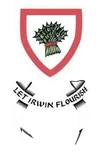GENEALOGICAL RESOURCES
TRACING YOUR FAMILY TREE: A ROADMAP
Genealogy is a giant puzzle with a huge challenge. The challenge is to find the pieces that are relevant to your family and place them in ‘their proper perspective. Here are some suggestions for getting started.
1. Organize what you already know.
Start with yourself or one of your children as the principal person and designate him/her as #1. Then fill in a family group sheet for every male in the direct line, assigning each a specific number as follows:
The father of the principal person- # 2; father’s father- # 4; mother’s father- # 6; father’s paternal grandfather- # g; father’s maternal grandfather- # 10; mother’s paternal grandfather- # 12; mother’s maternal grandfather- # 14; and continue making forms for as far back as you can go. Females are included on the husband’s form and are numbered thus: mother- # 3; father’s mother- # 5; mother’s mother- # 7; father’s paternal grandmother- # 9; father’s maternal grandmother- # 1I; mother’s paternal grandmother- # 13; mother’s maternal grandmother- # 15. Make a form for each marriage if person was married more than once.
Note the numbering pattern. Number 1, the principal person, may be either male or female. After that all males are even numbers, all females are uneven numbers. Each person’s father is double his number and each male’s spouse is one number up from his. e.g. Mother is # 3, her father is # 6, her paternal grandfather is # 12 and his wife # 13, thus mother’s paternal great grandfather is # 24 and his wife is # 25, and so on back through the generations.
Fill in what vital information you know- dates and places of births, marriages, deaths, maiden names, parents’ names, and children’s names, etc. Note your sources of information. It is helpful to make forms for other branches of the family but they won’t be in your numbering system.
2. Interview relatives.
Interview your oldest living relatives. Pick their brains about what they remember about the earliest days of the family and how family members are related, especially distant cousins, great aunts and uncles, etc., when and where they were born, where they lived. It’s helpful to record the conversations. Find out if anyone kept a family Bible with birth and marriage dates.
3. Document all information.
Don’t take anyone’s word. Document all the information you have so far and don’t be surprised if you find discrepancies. Obtain copies of birth certificates, marriage records, death certificates, wills. Look for naturalization records, passenger lists for immigrants. Verify each ancestor’s places of residence. Check US Censuses, military records, land and tax records in counties where families lived. Check Mormon Church (LDS) records for baptisms and marriages all over the world.
4. Seek new information.
Seek answers for the blanks you couldn’t fill and search for names of earlier ancestors, working back one generation at a time. The further you go back, the harder it is to find and document information. Birth/death certificates are rare prior to the early 1900’s. You’ll have to be resourceful to find women’s maiden names, their parents’ names and places of origin, for anyone several generations back. Look at all spellings of a name. Look for church records to verify marriages. Baptism records sometimes give dates of birth. Look for clues in side branches of the family.
5. Network with others.
Join at least two genealogical organizations- one where you live and one where your ancestors resided or originated. Networking is possible through queries in newsletters and society publications, and through correspondence by mail or on the Internet.
6. Educate yourself.
Read a good book on how to do genealogy or, better yet, sign up for a course in how to do it. Courses are often given in adult education classes in local communities. The National Genealogical Society (NGS) has an excellent correspondence course. Attend genealogy seminars and workshops. Visit county courthouses, libraries with old newspaper and genealogy sections, such as at historical societies and universities.
Check out archives at the county, state, and national levels. The Handy Book for Genealogists is invaluable for leasing what records are available in every state and county in the US, and for which years, and it gives addresses of where to write for the information.
7. Use modern technology.
A number of computer programs are available where you can enter data once and it will automatically be applied to relevant persons. These programs eliminate repetitive entries and spit out descendant and ancestor charts with the click of a mouse. NGS features a computer-users section in its quarterly newsletter. Check out the various programs available in order to choose the one best for you.
The author of the document is Clan Irwin Member:
Patricia Irwin Lesky
100 Willow Spring Rd
Wilmington DE 19807-2434
